|
|
|
Speaker Profile |
|
|
|
|
|
 |
Paul Choi received his B.S. from the California Institute of Technology in 2003 and is currently completing his Ph.D. under the guidance of Dr. X. Sunney Xie at the Department of Chemistry, Harvard University. He has been applying single-molecule fluorescence techniques for the study of gene expression in individual bacteria cells, primarily through the sensitive detection of fluorescent proteins. His interests include the study of cell-to-cell variation, bistability, DNA looping, and whole-genome expression profiling. He currently holds a fellowship from the John and Fannie Hertz Foundation.
|
|
| Page Top |
|
|
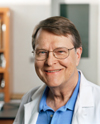 |
Clyde A. Hutchison III is a member of the Synthetic Biology Group headed by Hamilton Smith at the J. Craig Venter Institute-West. He graduated from Yale (B.S., 1960), and Cal Tech (Ph.D., 1968) where he studied with Robert L. Sinsheimer. He joined the faculty at UNC-Chapel Hill (1968-2005) where he collaborated with Marshall Edgell on early applications of restriction enzymes. While on sabbatical in Fred Sanger’s lab (1975-6) he participated in determining the first complete sequence of a DNA molecule (phiX174). He developed site-directed mutagenesis with Michael Smith (1978). He cloned and sequenced the beta-globin gene cluster in the mouse with Edgell. There they discovered L1, the major retrotransposon in the mammalian genome. In 1990 he began work with Mycoplasma genitalium, a model for the minimal cellular genome. This led to collaboration with Smith and Venter, and eventually to his current work on synthetic genomics. He is Kenan Professor Emeritus at UNC-Chapel Hill, a member of the National Academy of Sciences, and a fellow of the American Academy of Arts and Sciences.
|
|
| Page Top |
|
|
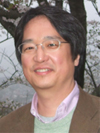 |
Tsutomu Katayama is currently Professor of the Laboratory of Molecular Biology, in the Graduate School of Pharmaceutical Sciences at Kyushu University in Japan. He received B. Sc. from the Department of Biology at Nagoya University in 1985 and Ph. D. from the Graduate School of Biophysics at Kyoto University in 1990. He served as Postdoctoral Fellow or Long-term Fellow of the International Human Frontier Science Program (1991-1993) in the laboratory of Dr. Arthur Kornberg in the Department of Biochemistry at Stanford University (1990-1993) and in the laboratory of Dr. Elliott Crooke in the Department of Molecular Biology and Biochemistry at Georgetown University Medical Center (1993-1994). He moved to the present laboratory in 1994 and became Professor in 2002. His study is to reveal fundamental molecular systems for regulation of the initiation of chromosomal DNA replication.
|
|
| Page Top |
|
|
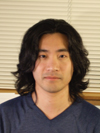 |
Nobuyasu Koga completed his undergraduate studies in Kobe University Department
of Chemistry and earned a Master’s Degree from the Graduate School of
Science and Technology (Department of Chemistry) of the same university.
He moved to the Department of Molecular Science of Kobe University to earn
his PhD. He worked as Postdoctoral fellow at Kobe University (2006-2007)
and Kyoto University (2007), before taking up his current position as Senior
Fellow in University of Washington Department of Biochemistry in July 2007.
Working under Dr. David Baker, Dr. Koga is studying protein folding, and
exploring the rational method of de novo design of protein structure.
|
|
| Page Top |
|
|
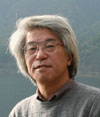 |
Takao Kondo received his Master’s (1972) and Ph.D. (1977) from Nagoya
University. He joined the faculty at the National Institute for Basic Biology
in 1978 and remained there until 1995. During his tenure at the National
Institute for Basic Biology, he also worked briefly as a Visiting Scientist
at Harvard University (1985) and Vanderbilt University (1990-1991). In
1995, he moved to assume his current position as Professor of Biology at
the Graduate School of Science of Nagoya University, and is head of the
Chronobiology Research Group. His group studies the cyanobacterial clock
and the photoperiodic induction of duckweed. In 2006, he was appointed
Dean of the Graduate School of Science, and also serves as Director of
Institute for Advanced Research at Nagoya University.
|
|
| Page Top |
|
|
|
Vincent Noireaux got his B.Sc. in applied physics at the University of Tours (France) in 1994. He moved to Paris where he got a master degree in physics in 1995 at Univeristy Paris 11 (Orsay). He did his PhD at the Curie Institute (Paris, 1996-2000) in the laboratory of Jacques Prost on the motion of the bacterium Listeria. He studied the actin cytoskeleton mechanism involved in cell motility He learned the biology related to this project in the laboratory of Daniel Louvard. In 2000 he joined the laboratory of Albert Libchaber at the Rockefeller University in New York city where he spent five years as a postdoc. He used cell-free expression systems to reconstruct elementary gene networks and a protocell system. In 2005, he moved to the University of Minnesota where he is pursuing his work in synthetic biology using cell-free expression to study information processes.
|
|
| Page Top |
|
|
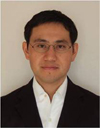 |
Hiroyuki Noji completed his undergraduate and Master’s studies at Tokyo Institute of Technology Graduate School of Bioscience and Biotechnology. He then received his PhD from the Interdisciplinary Graduate School of Science and Engineering of the same institute in 1997. He was a CREST Postdoctoral researcher (1998- 2000) and later appointed PRESTO Researcher (200-2001) by the Japan Science and Technology Agency (JST). After four years as Assistant Professor at the University of Tokyo Institute of Industrial Science, Dr. Noji was appointed to his current position as Professor in Osaka University Institute of Scientific and Industrial Research in 2005.
His laboratory is presently working on three research topics: 1) molecular mechanisms of energy conversion of ATP synthase; 2) biomolecular Micro-Electro-Mechanical Systems (MEMS); and 3) single-molecule measurement of membrane protein in lipid bilayer.
|
|
| Page Top |
|
|
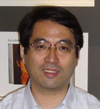 |
Yoshiki Sasai received his M. D. from the Kyoto University School of Medicine in 1986, subsequently performing internships in general practice and emergency medicine. He completed the Ph. D. course at the same institution in 1992, for work on neural specific transcriptional regulators. In 1993, he took a postdoctoral fellowship in the De Robertis lab at the UCLA School of Medicine, remaining there until 1996 when he was appointed associate professor at the Kyoto University School of Medicine. He assumed a professorship at the Kyoto University Institute for Frontier Medical Sciences in 1998, and was appointed group director at the CDB in 2000. Main research topics of his lab are neural differentiation and brain patterning from pluripotent cells of Xenopus and mammals. He serves on the editorial boards of Neuron, Genesis and Developmental Dynamics.
|
|
| Page Top |
|
|
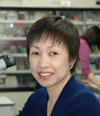 |
Asako Sugimoto received her B. Sc. from the Department of Biophysics and Biochemistry in the University of Tokyo, School of Science in 1987, and her doctorate from the same institution in 1992. She worked as a postdoctoral fellow in Joel Rothman's laboratory in the University of Wisconsin - Madison from 1992 to 1996, before returning to Japan to assume an assistant professorship at the University of Tokyo. She remained in that position until 2002, pursuing concurrent work as a Japan Science and Technology Corporation PRESTO researcher from 1997 to 2000. She was appointed team leader at the RIKEN CDB in 2001. Her works seeks to improve the understanding of how an organism's genome controls the dynamic cellular behaviors using C. elegans embryos as a model system.
|
|
| Page Top |
|
|
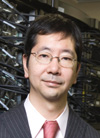 |
Makoto Taiji was born in Tokyo, Japan, in 1964. He graduated from the Department
of Physics, Faculty of Sciences, the University of Tokyo, in 1986, and
obtained his PhD in 1991 from the same university. From 1991 to 1996, he
was the assistant professor of the Graduate School of Arts and Sciences
at the University of Tokyo. From 1997 to 2002, he was the associate professor
of the Institute of Statistical Mathematics. He joined the Genomic Sciences
Center, RIKEN, as a team leader and was promoted to deputy project director
in 2007. Currently he is the group director of computational systems biology
research group, advanced science institute, RIKEN. His research focuses
on the applications of high-performance computing in life sciences, and
dedicated computer architectures for scientific simulations. He was awarded
the Gordon Bell Prize in 1995 for developing a ‘Special-Purpose Machine’,
and in 2006 he received an Honorable Mention for the same award for the
‘Peak Performance’ achieved by the computer he developed. |
|
| Page Top |
|
|
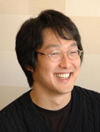 |
Hiroki R. Ueda is a head of Laboratory for Systems Biology, and a manager
of Functional Genomics Unit, at Center for Developmental Biology, RIKEN
in Japan. He received his MD from Faculty of Medicine, the University of
Tokyo in 2000, and received PhD from Graduate School of Medicine, the University
of Tokyo in March 2004. While an undergraduate student, he worked as a
research assistant on a biological simulation system project at Sony Computer
Science Laboratories. While a graduate student, he next went on to work
as a researcher from 2000 and then group leader from 2002 at Yamanouchi
Pharmaceutical, on a project studying biological clock mechanisms in fly
and mouse. He was appointed as laboratory head at the CDB from April, 2003
and also appointed as a manager of Functional Genomics Unit at the CDB
from October, 2004. He also became a visiting professor in Tohoku University
in 2005, and Tokushima University from April, 2005, and an invited professor
in Osaka University from April, 2006. He received Japan Innovator Awards
(Nikkei BP) on his invention of diagnostic method of body time and rhythm
disorders and Tokyo Techno Forum 21 Gold Medal (Tokyo Techno Forum 21),
and Young Investigator Awards (MEXT, Japan) on his research “systems-biological
analysis of mammalian circadian clocks”. His research interests include
Systems Biology on complex and dynamic biological phenomena (e.g. mammalian
circadian clocks) and Systems-Based Medicine on Human Disease (e.g. circadian
rhythm disorders).
|
|
| Page Top |
|
|
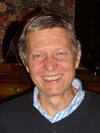 |
Horst Vogel studied Chemistry at the University of Würzburg/Germany and did his PhD thesis with Manfred Eigen at the Max-Planck-Institute for Biophysical Chemistry in Göttingen. After scientifically fruitful periods at the Max-Planck-Institute for Biology in Tübingen, the Biocenter in Basel, and the Karolinska Institute in Stockholm, he was in 1994 appointed as Professor of Biophysical Chemistry at the Swiss Federal Institute of Technology in Lausanne (EPFL), Switzerland, where he directs an interdisciplinary Laboratory of Biomolecular Science.
Horst Vogel’s laboratory at the Swiss Federal Institute of Technology in Lausanne (EPFL) bridges activities ranging from biochemistry, biophysics, cell and molecular biology to novel micro- and nanotechnologies. His laboratory has developed a number of novel bioanalytical techniques, which allows to quantify the interactions between proteins in living cells opening novel ways to investigate the complex biochemical cellular network. Currently his laboratory concentrates on three major research areas: 1. The biophysics and biochemistry of cellular signaling reactions mediated by estrogen, ionotropic and G protein coupled receptors (adrenergic, neurokinin, odorant and taste receptors). 2. The self-assembly and folding of (bio)polymers in solution and at interfaces. 3. The development of novel bioanalytical techniques in the micro- and nanometer range.
|
|
| Page Top |
|
|
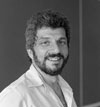 |
David Weitz received his PhD from Harvard. He worked at Exxon Research
and Engineering as a research physicist for nearly 18 years, and then became
a Professor of Physics at the University of Pennsylvania. He moved to Harvard
about 9 years ago, and is currently the Mallinckrodt Professor of Physics
and Applied Physics. He is also the director of Harvard's Materials Research
Science and Engineering
|
|
| Page Top |
|
|
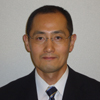 |
Shinya Yamanaka received his M.D. from Kobe University in 1987 and his
Ph.D. from Osaka City University Graduate School in 1993. From 1987 to
1989 he was a resident in National Osaka Hospital and he spent the period
from 1993 to 1995 as a postdoctoral fellow in the Gladstone Institute of
Cardiovascular Disease, University of California, San Francisco and was
appointed as a staff research investigator at the same institute in 1995.
He returned to Osaka City University Medical School to take an assistant
professor position in 1996, and was subsequently appointed an associate
professor at the Nara Institute of Science and Technology in 1999, where
he became a full professor in 2003. He then moved on to take up his current
position as a professor in the Institute for Frontier Medical Sciences,
Kyoto University in 2004. His research focuses on generating pluripotent
stem cells directly from somatic cells by defined factors. Since January
2008, he has been serving the Director of CiRA, Center for iPS cell Research
and Application, Kyoto University.
|
|
| Page Top |
|
|
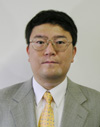 |
Hideo Yokota received the M. Agri. from Nihon University, Tokyo, Japan
in 1991 and 1993, respectively. He received Doctor of Engineering degree
from the University of Tokyo in 1999. In 1993, he joined Kanagawa Academy
of Science and Technology, where he studied 3D Digitization of biological
sample method and developed these system. In 1999, he joined RIKEN. He
is now the Team Leader of Bio-research Infrastructure Construction Team,
V-CAD System Research Program and Cell-scale Research and Development Team,
Research and Development Group for Next-generation Integrated Living Matter
Simulation, Research Program for Computational Science at RIKEN. He is
also a visiting Associate Professor at Hokkaido University. He currently
studies imaging and simulation of Biological Specimen.
|
|
| Page Top |
|
|
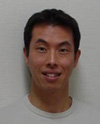 |
Tetsuya Yomo received his Ph.D. in Engineering from Graduate School of Engineering, Osaka University in 1991. He spent the period from 1988 to 1989 as Researcher at Beckman Research Institute City of Hope. In 1991, he was appointed Assistant Professor at Faculty of Engineering, Osaka University. He then served as Associate Professor at Graduate School of Engineering, Osaka University (1998-2002) and later moved to Graduate School of Information Science and Technology, Osaka University (2002-2006). Since 2006 he has been Professor at the same institute and also served as Professor at Graduate School of Frontier Biosciences, Osaka University. As well, he has been appointed Group Leader at Kaneko Complex System Biology Project, ERATO, JST since 2004. He was awarded the Zuckerkandl Prize by Journal of Molecular Evolution in 2002. Main research topic of his group is complex system, experimental evolution, artificial cell, and artificial symbiosis. Currently, he is experimentally synthesizing artificial life, genetic network for cell differentiation, and symbiosis to understand fundamental rules behind biological complex systems.
|
|
| Page Top |
|
|
|
|
|

